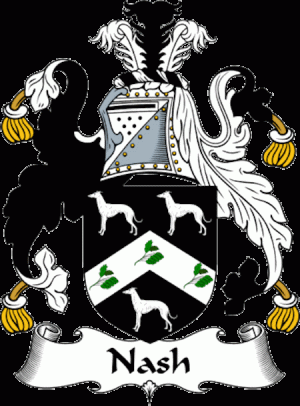
You know you’ve arrived when you’re on a family’s coat of arms.
By way of a little background, the concept of a coat of arms originated in Europe. They were first used by knights as a way of identifying themselves, and setting themselves apart from the enemy because being speared by a lance wielded by your own side would have been bad. And painful, if not fatal.
Early on, only an individual had rights to the coat of arms during his lifetime, but sometimes he was allowed to pass it down to his descendants, and at this point it typically became the family’s coat of arms, or family crest.
People investigating their family history often think there’s a coat of arms back there somewhere, and lots of companies will make one with the family’s supposed crest on it, but most of these businesses don’t do legitimate genealogical research. Having a family/clan coat of arms is much rarer than one might imagine, and having the hereditary right to use it is even rarer. There was significance to the elements that went on the image, from the family motto and shield supports to the banner and mantle. Symbols represented the achievements of the person or family, or they symbolized the qualities the knight felt he had. The appearance of a canine signified courage, fidelity, and loyalty.
The Nash family of Ireland had a coat of arms. Though the name is of Anglo-Saxon descent, it spread to the Celtic countries of Ireland, Scotland and Wales in very early times and is found in many medieval manuscripts throughout these countries. The name was popular in Ireland where it was taken by a family who’d became well established in County Kerry during the thirteenth century at the time of the Anglo-Norman settlement, the original Norman form of the name having been ‘de Nais.’
Though we’ve been unable to find an actual archival image of that coat of arms, it has been described as bearing three Irish Red and White Setters. The antiquity of this breed might surprise anyone unfamiliar with the IRWS, but the breed actually predates the red Irish Setter. It’s not exactly clear when the Irish Red and White Setter first appeared as a breed, but there is a reference to “spaniels established in England, mostly white with red patches” by the 14th century, the word “spaniel” most likely having been used to describe a dog used for sport and not a particular breed type.
By the 1500s ,”setting dogs” were referred to in many manuscripts, and by the 17th century, dogs looking like the Irish Red and White Setter appeared on many paintings. Few breeds, however, can lay claim to having appeared on a family coat of arms.
Our image was most likely one designed in modern times, and the dogs on it are clearly not setters, but we wanted to give you some idea of what the Nash crest might have looked like. If there are any readers with Nash as their surname and you have insights into your family’s ancient crest, we’d sure like to hear from you.
